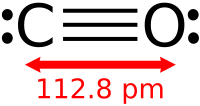
Photo from wikipedia
Abstract Polymeric carbon nitride-hydrogen peroxide adduct (PCN-H 2 O 2 ) has been prepared, thoroughly characterised and its application for selective photocatalytic conversion of 5-hydroxymethylfurfural (HMF) to 2,5-furandicarboxaldehyde (FDC) in… Click to show full abstract
Abstract Polymeric carbon nitride-hydrogen peroxide adduct (PCN-H 2 O 2 ) has been prepared, thoroughly characterised and its application for selective photocatalytic conversion of 5-hydroxymethylfurfural (HMF) to 2,5-furandicarboxaldehyde (FDC) in aqueous suspension has been studied. The PCN-H 2 O 2 adduct is stable in aqueous suspension under UV and solar irradiation up to 100 °C. It is also stable up to 200 °C if heated in air, while at temperatures close to 300 °C its decomposition takes place. Based on the obtained characterisation data it has been proposed that H 2 O 2 attaches to the non-polymerised carbon nitride species and to the heptazine nitrogen atoms, thus producing strong hydrogen bonding within the PCN-H 2 O 2 adduct. The blockage of the surface amino-groups in PCN-H 2 O 2 by H 2 O 2 hinders the interaction of HMF with these sites, which are responsible for unselective substrate conversion. PCN-H 2 O 2 , although being less active, possesses a superior selectivity in natural solar light assisted oxidation of HMF to FDC reaching 80% with respect to its thermally etched PCN counterpart, which gives rise to a 40–50% selectivity. We believe that the exceptional performance of the applied photocatalyst in the selective photocatalytic conversion of HMF to a high added value FDC in a green solvent under natural illumination makes a significant contribution to the development of environmentally friendly technologies for biomass valorisation.
Journal Title: Journal of Catalysis
Year Published: 2018
Link to full text (if available)
Share on Social Media: Sign Up to like & get
recommendations!